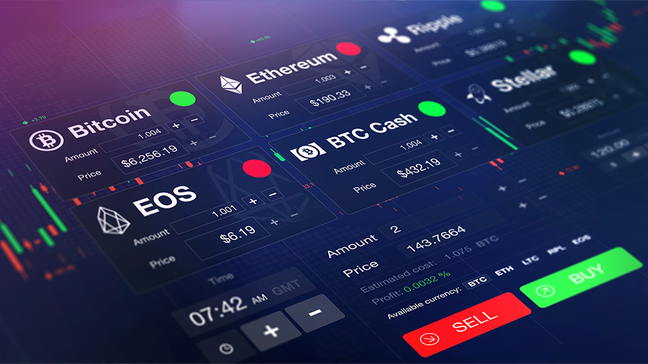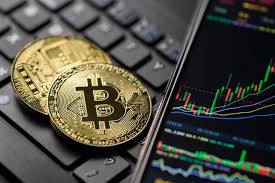
Unlocking the Future: Trading Simulator Crypto
In the rapidly evolving world of cryptocurrency, novice and experienced traders alike seek effective avenues to hone their trading skills. One of the most revolutionary tools at their disposal is the trading simulator. These platforms provide a risk-free environment where individuals can practice without the fear of losing real money. If you’re ready to explore the world of crypto trading, you can begin with resources like Trading Simulator Crypto http://recursosanimador.com/scripts/librovisitas2.php?pagina=9585, but in this article, we will delve deeper into the intricacies and advantages of using a trading simulator specifically designed for cryptocurrencies.
What is a Trading Simulator?
A trading simulator mimics a real trading environment by allowing users to buy and sell assets using virtual currency. These simulators utilize real market data, enabling users to track price movements, test strategies, and refine their trading skills without the risk of financial loss. Particularly for cryptocurrency, where market volatility can often lead to significant gains or losses in short periods, a simulator serves as a valuable training ground.
Why Use a Trading Simulator for Cryptocurrencies?
There are several reasons why leveraging a trading simulator for cryptos is beneficial:

- Risk-Free Learning: With virtual funds, traders can experiment with different strategies and learn from their mistakes without financial repercussions.
- Understanding Market Dynamics: Cryptocurrency markets operate differently than traditional markets. A simulator allows users to grasp the unique dynamics of crypto trading.
- Testing Strategies: Traders can backtest their strategies over historical data before applying them in real market conditions.
- Building Confidence: Practicing on a simulator helps build confidence, preparing traders for real-world scenarios where emotions and stakes are high.
- Staying Updated: Most simulators provide experiences with real-time data, enabling users to stay informed about market conditions and trends.
Features of an Effective Trading Simulator
When exploring various trading simulators, you should consider several key features that enhance the user experience and learning potential:
- User-Friendly Interface: A simulator should have an interface that is intuitive and easy to navigate, especially for beginners.
- Real-Time Data: Access to live market data is essential for simulating realistic trading scenarios.
- Diverse Asset Options: The ability to trade various cryptocurrencies allows users to diversify their experience and learn how to manage different types of assets.
- Performance Analytics: Integrated tools for analyzing performance help users assess their strategies and overall trading efficacy.
- Community and Support: Access to a community or customer support can provide additional learning resources and a platform for discussion and strategy sharing.
How to Get Started with a Trading Simulator
Getting started with a trading simulator is relatively straightforward. Follow these steps to embark on your cryptocurrency trading journey:
- Choose a Simulator: Research and select a trading simulator that suits your needs. Look for user reviews and feature comparisons.
- Create an Account: Sign up on the platform of your choice. Most simulators allow you to open an account for free.
- Fund Your Virtual Account: Acquire virtual funds provided by the simulator to start trading.
- Learn the Platform: Familiarize yourself with the tools and features offered by the simulator.
- Begin Trading: Start executing trades and practicing strategies. Remember, mistakes are a part of the learning process!
- Analyze and Adjust: After each trading session, analyze your performance and make adjustments to your strategies as necessary.

Common Mistakes to Avoid
Even in a risk-free trading environment, it’s essential to cultivate disciplined habits to maximize learning. Here are some common pitfalls to avoid:
- Over-Trading: It’s easy to get carried away with virtual money. Practice moderation to mirror real-world trading psychology.
- Neglecting Research: Don’t assume a simulator means you can skip market research. Realistic trading requires continuous learning and analysis.
- Ignoring Emotions: While emotions may be muted in a simulator, practicing with a cool head helps prepare for the pressures of actual trading.
- Focusing Only on Winning: While it’s tempting to focus solely on profitable trades, learning from losing trades is crucial for long-term success.
Transitioning to Real Trading
Once you feel comfortable with a trading simulator and have honed your skills, it may be time to venture into the real market. Here are some steps to ease the transition:
- Start Small: Begin with a modest investment to limit risk while you adjust to the dynamics of live trading.
- Apply What You’ve Learned: Use the strategies that worked best in the simulator as you enter real trades.
- Remain Disciplined: Stick to your trading plan and avoid the urge to deviate based on knee-jerk reactions.
- Seek Support: Engage with trading communities for support, advice, and sharing experiences as you transition.
Conclusion
The role of trading simulators in the cryptocurrency market cannot be overstated. They serve as invaluable tools for aspiring traders, providing an arena to learn, fail, and succeed without the pressures of real money on the line. By utilizing these platforms strategically, traders can develop skills, confidence, and the knowledge necessary to navigate the complexities of the ever-changing crypto landscape. Embrace the opportunity for growth, and before long, you could be well on your way to becoming a successful crypto trader.

